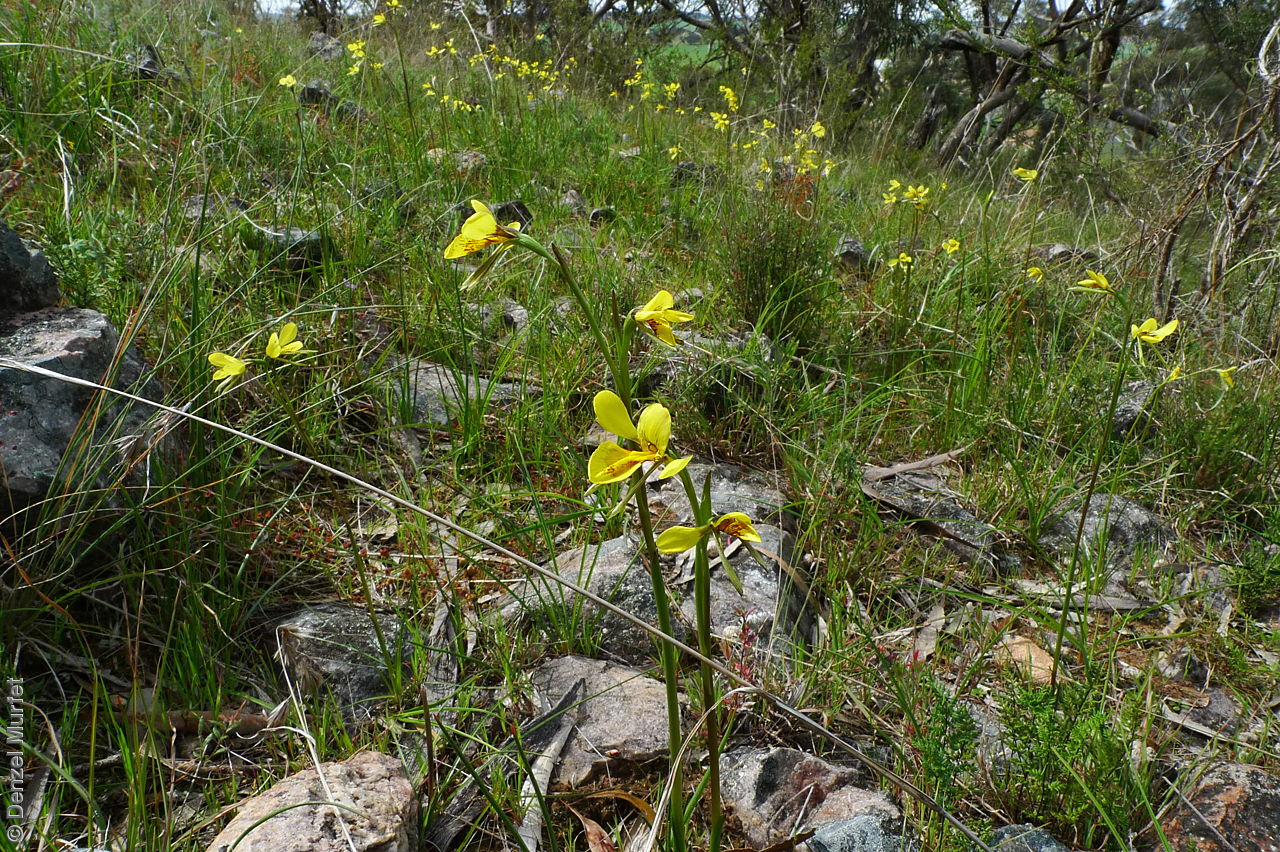
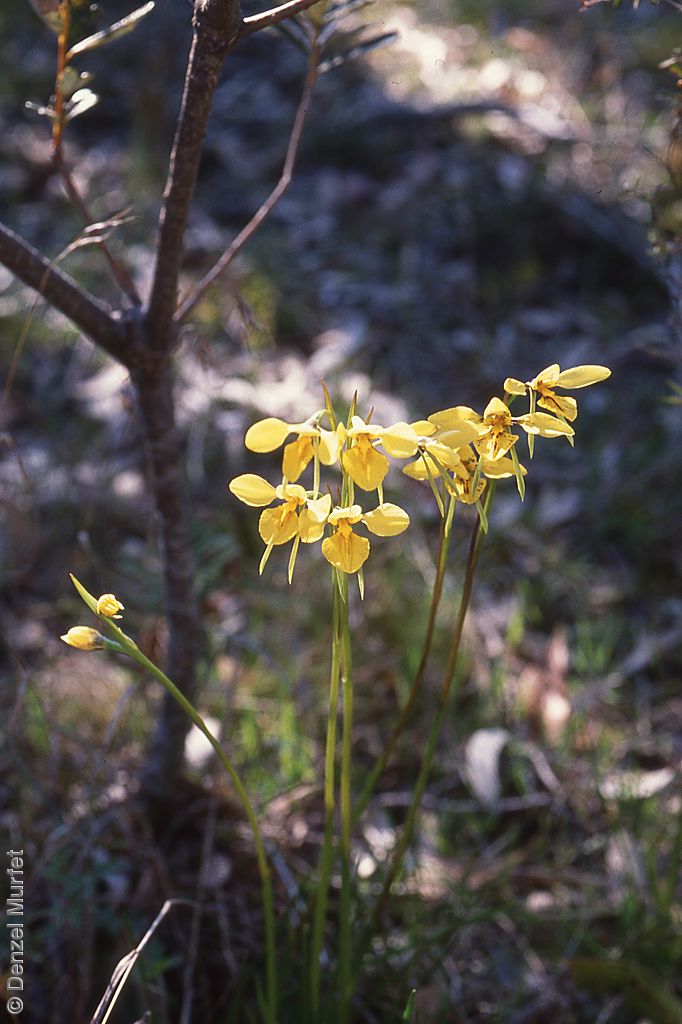
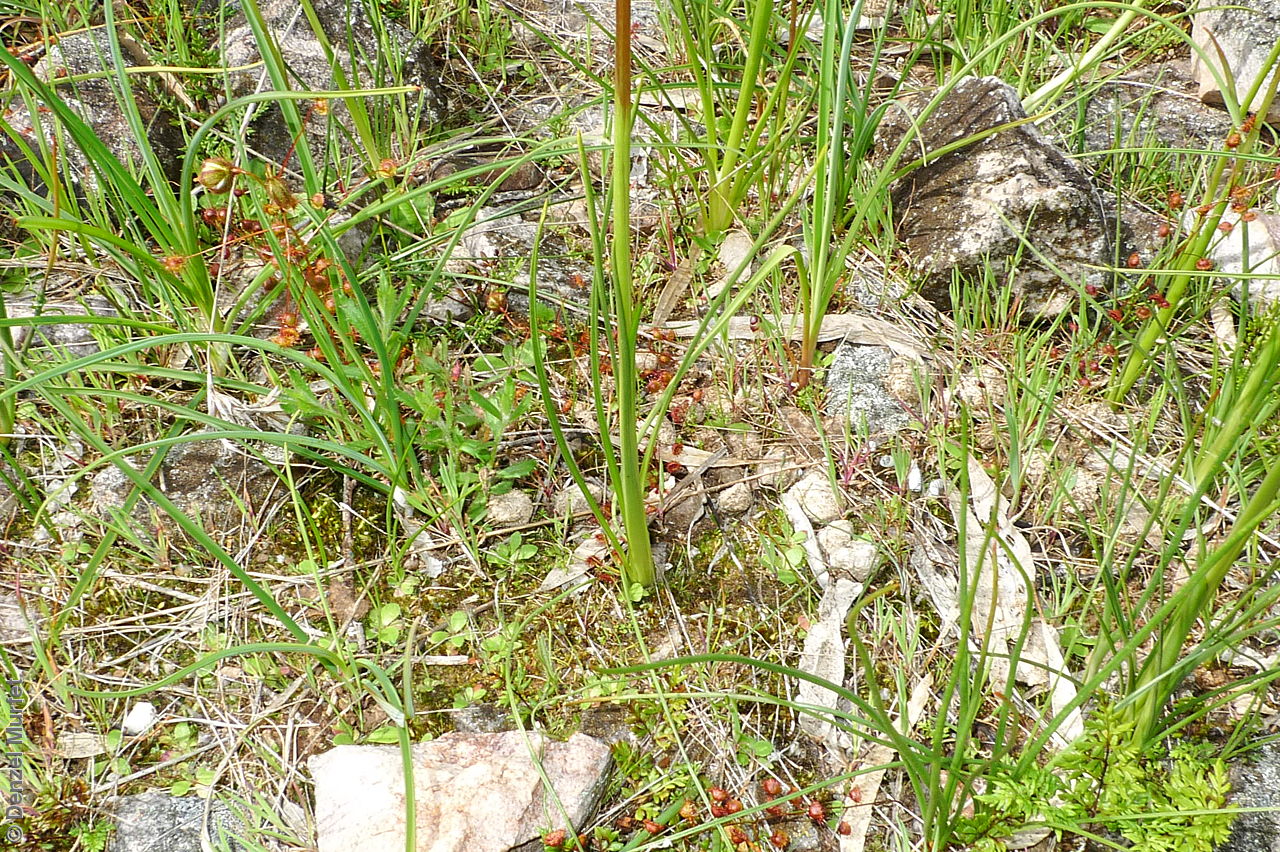
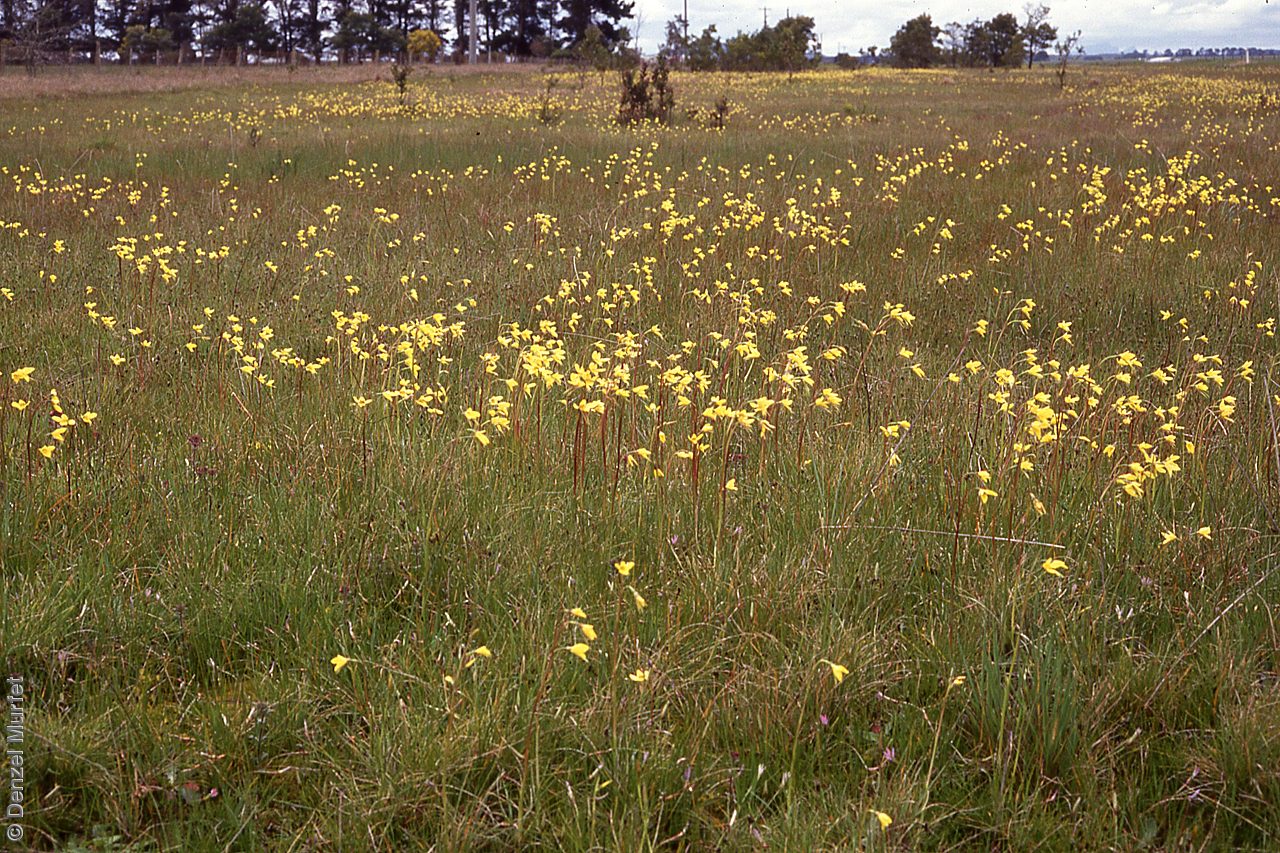
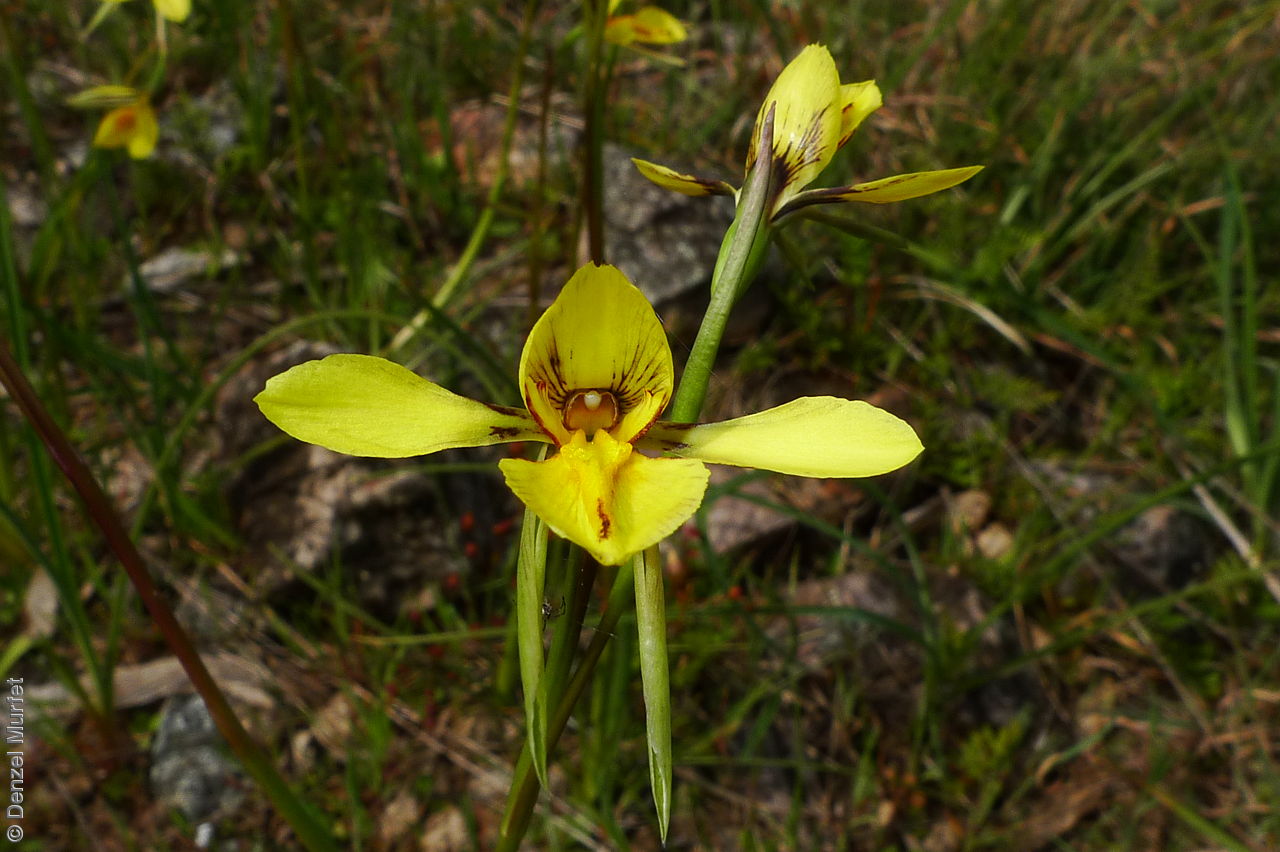
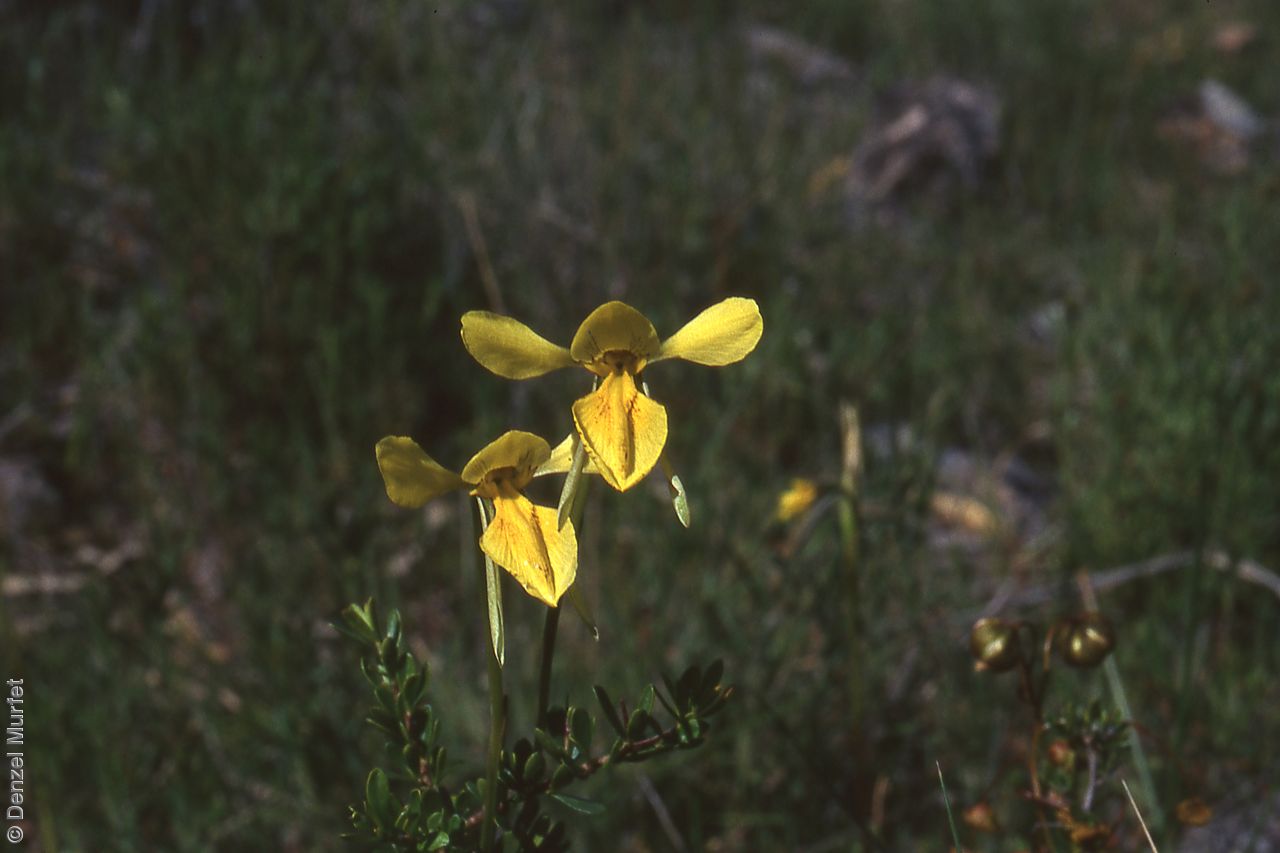
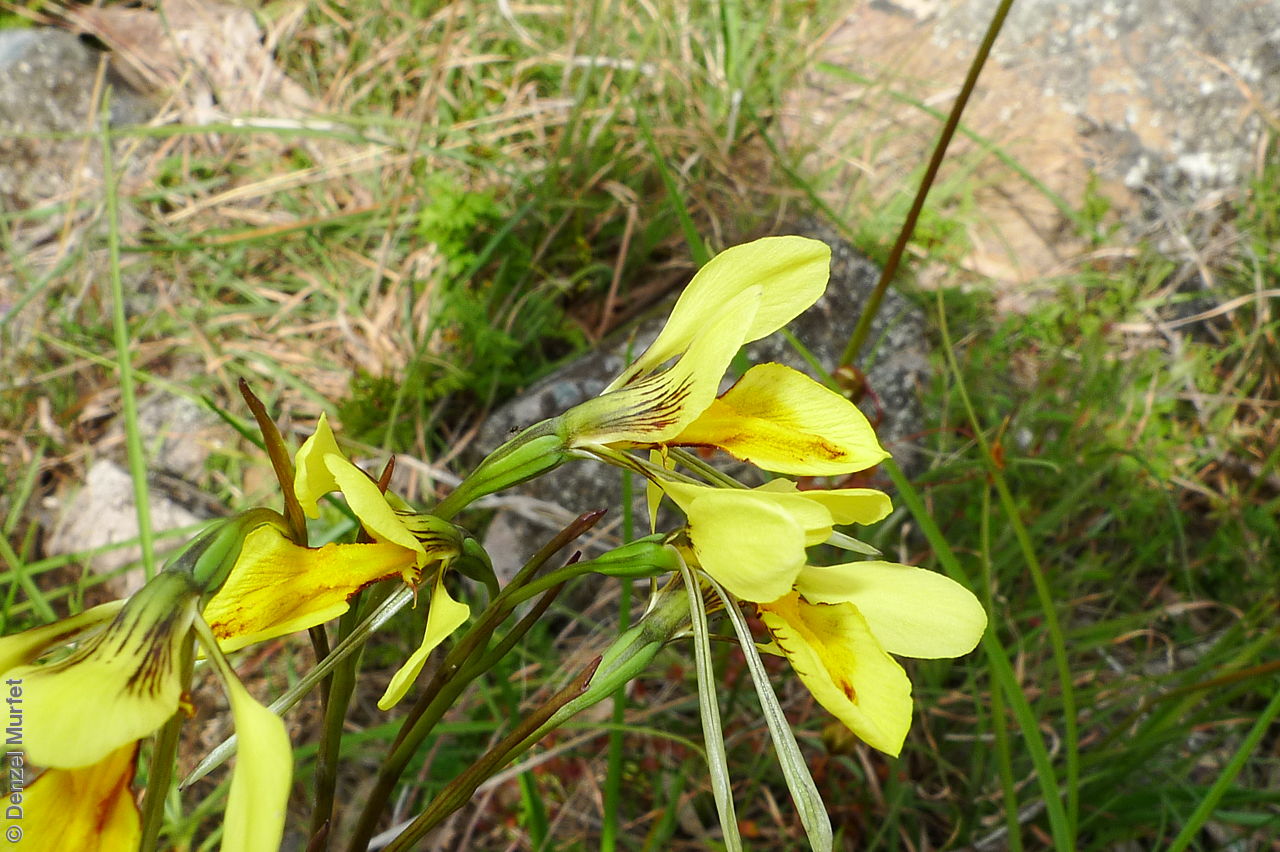
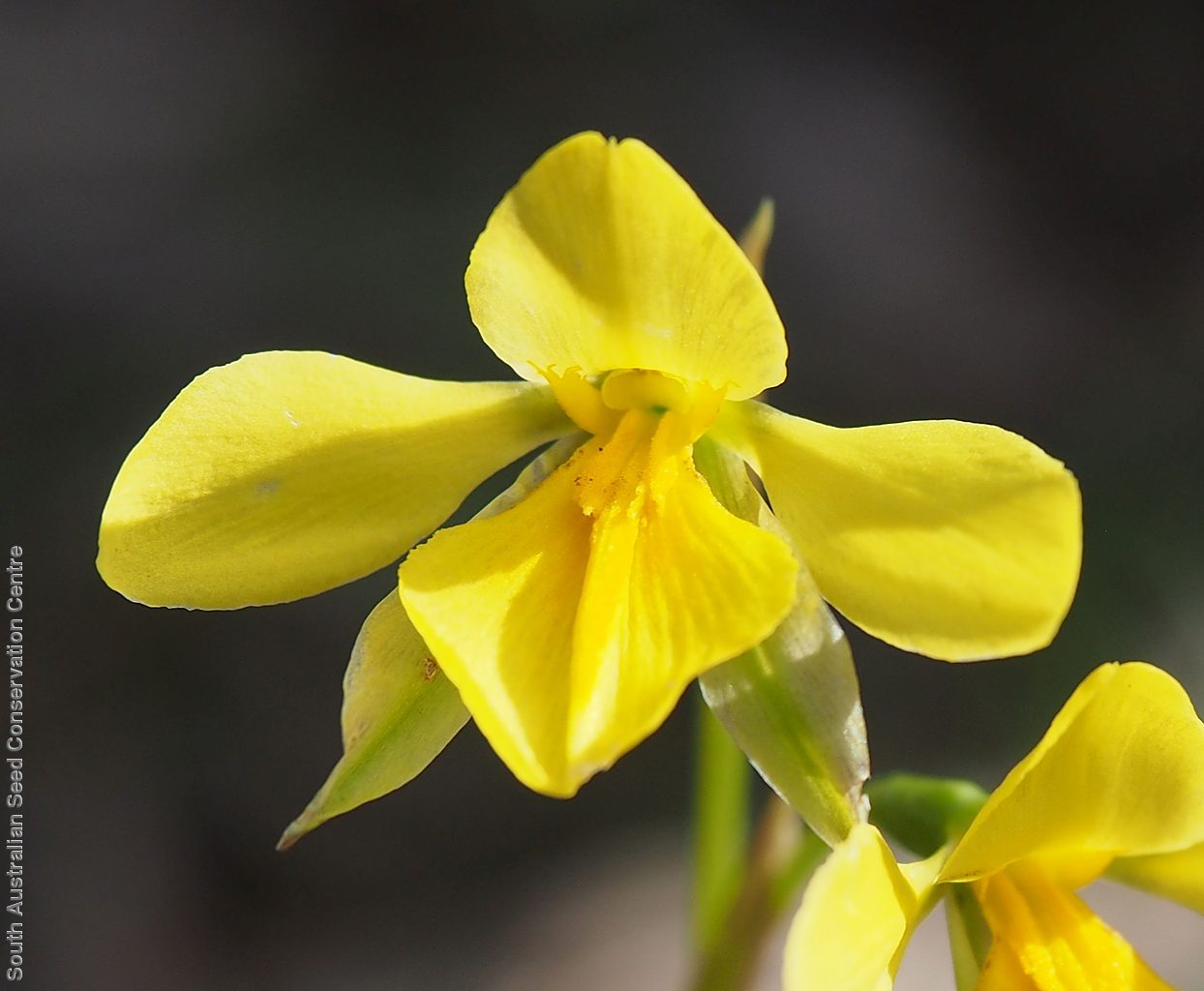
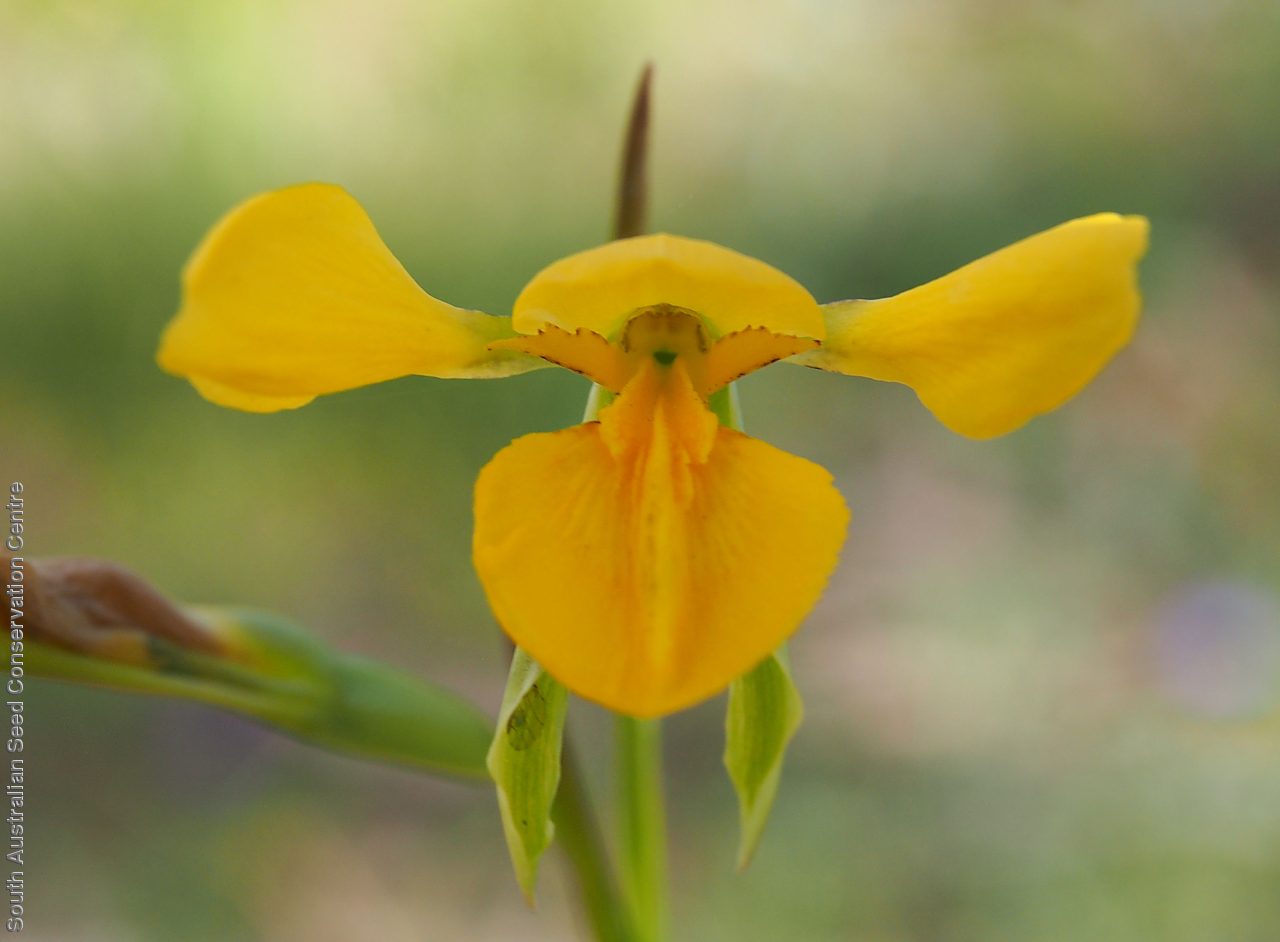
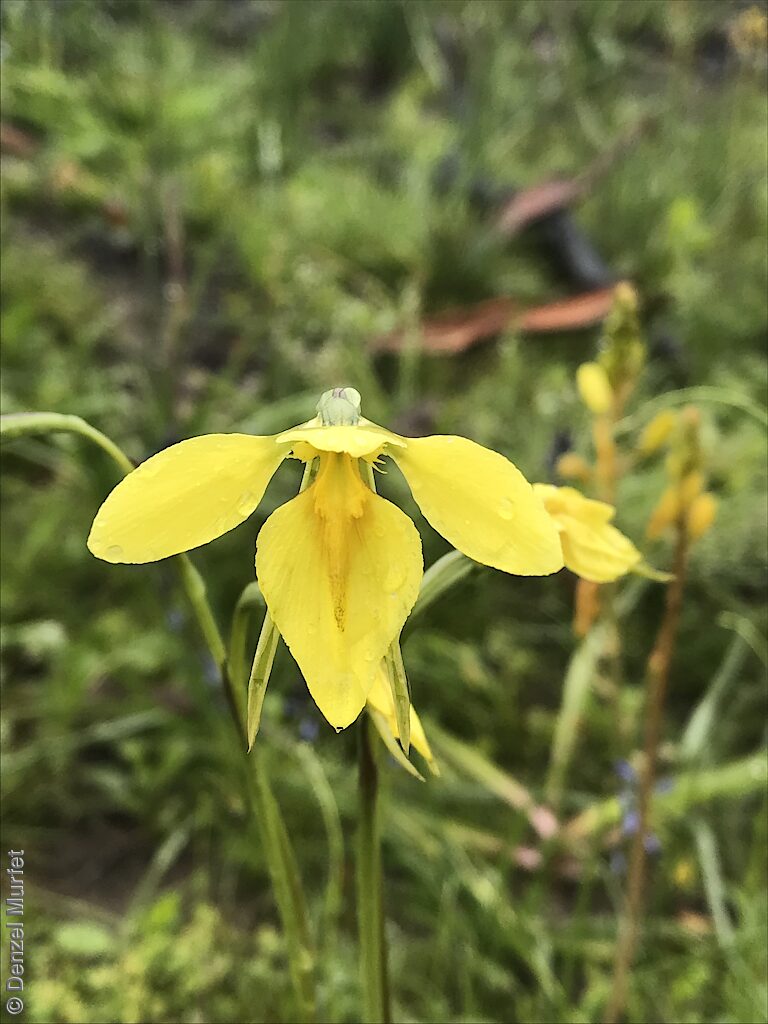
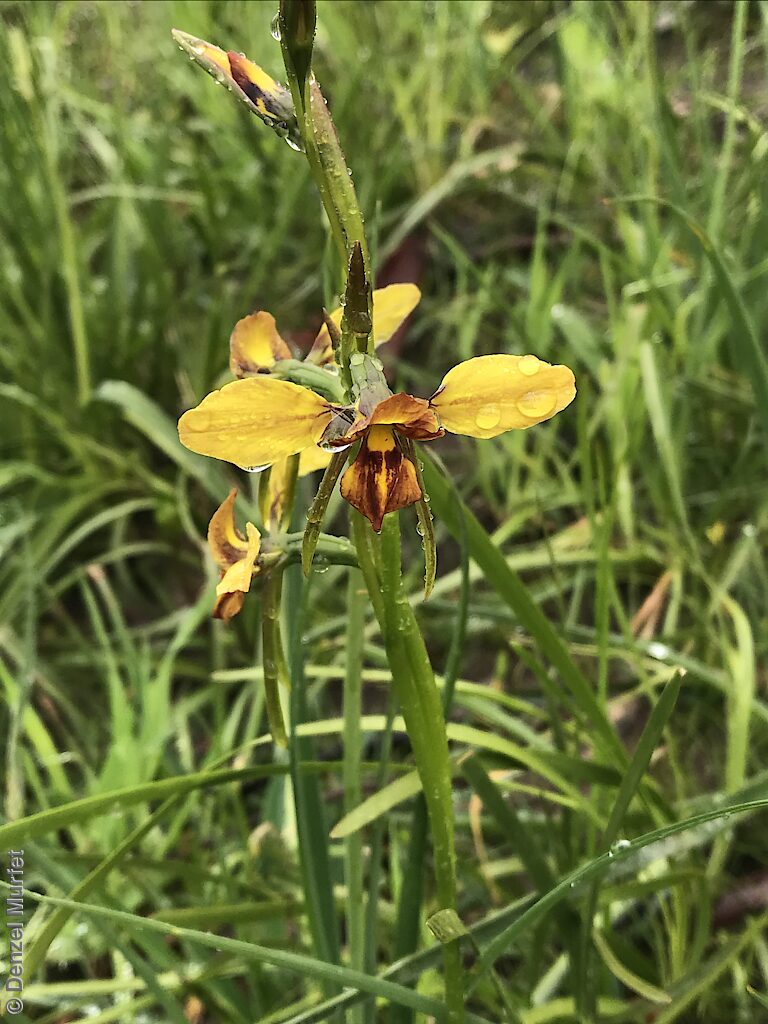
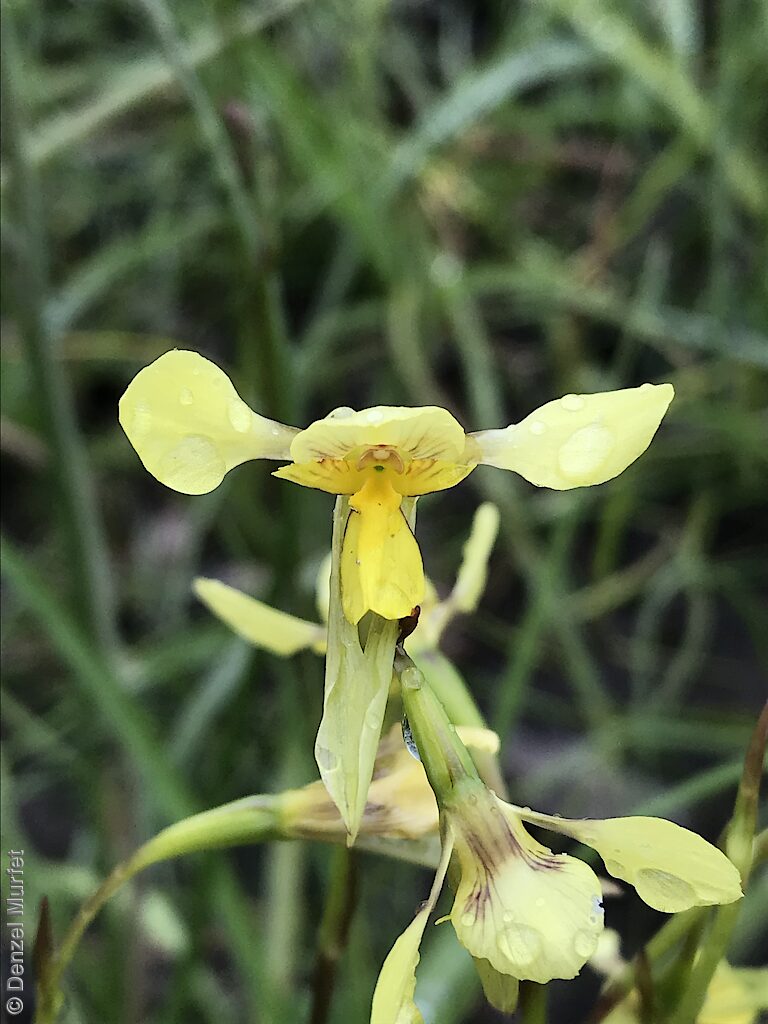
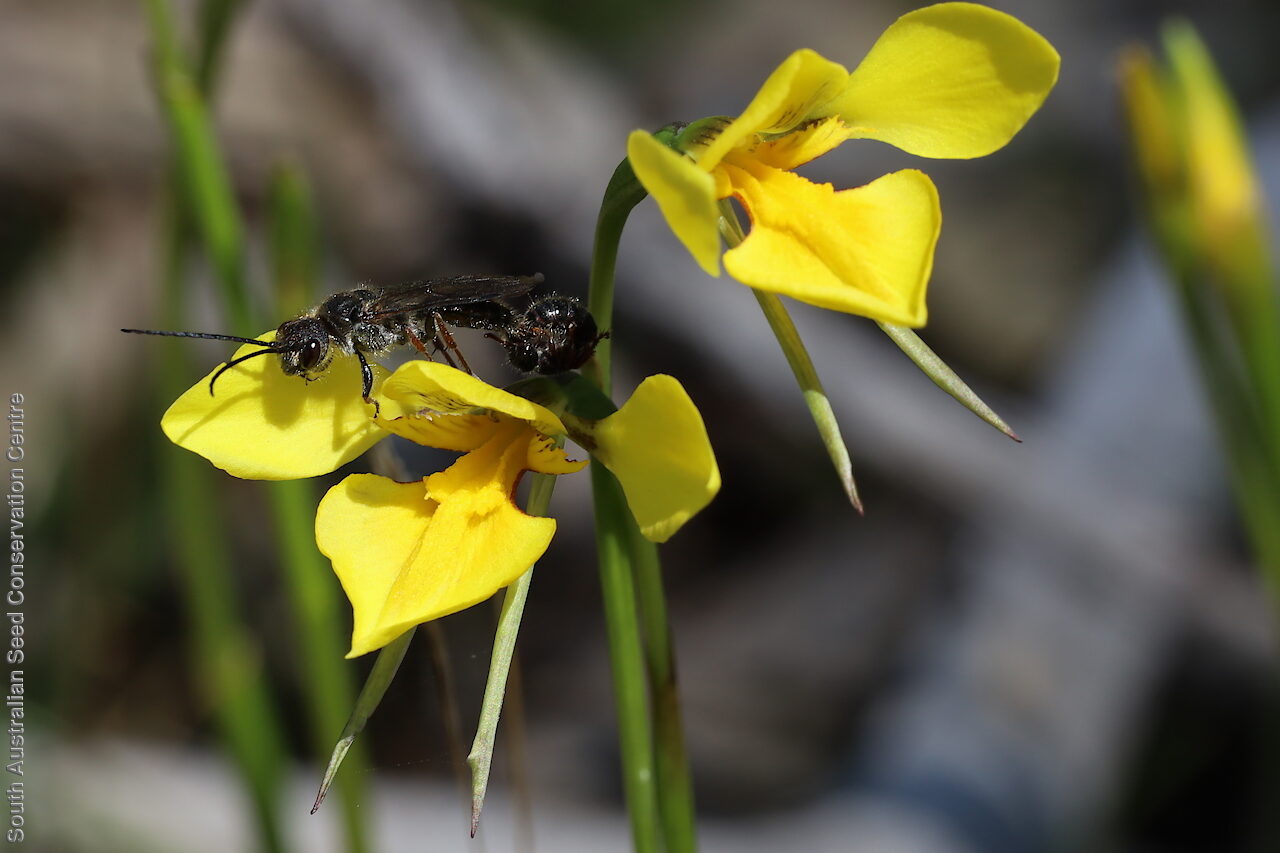
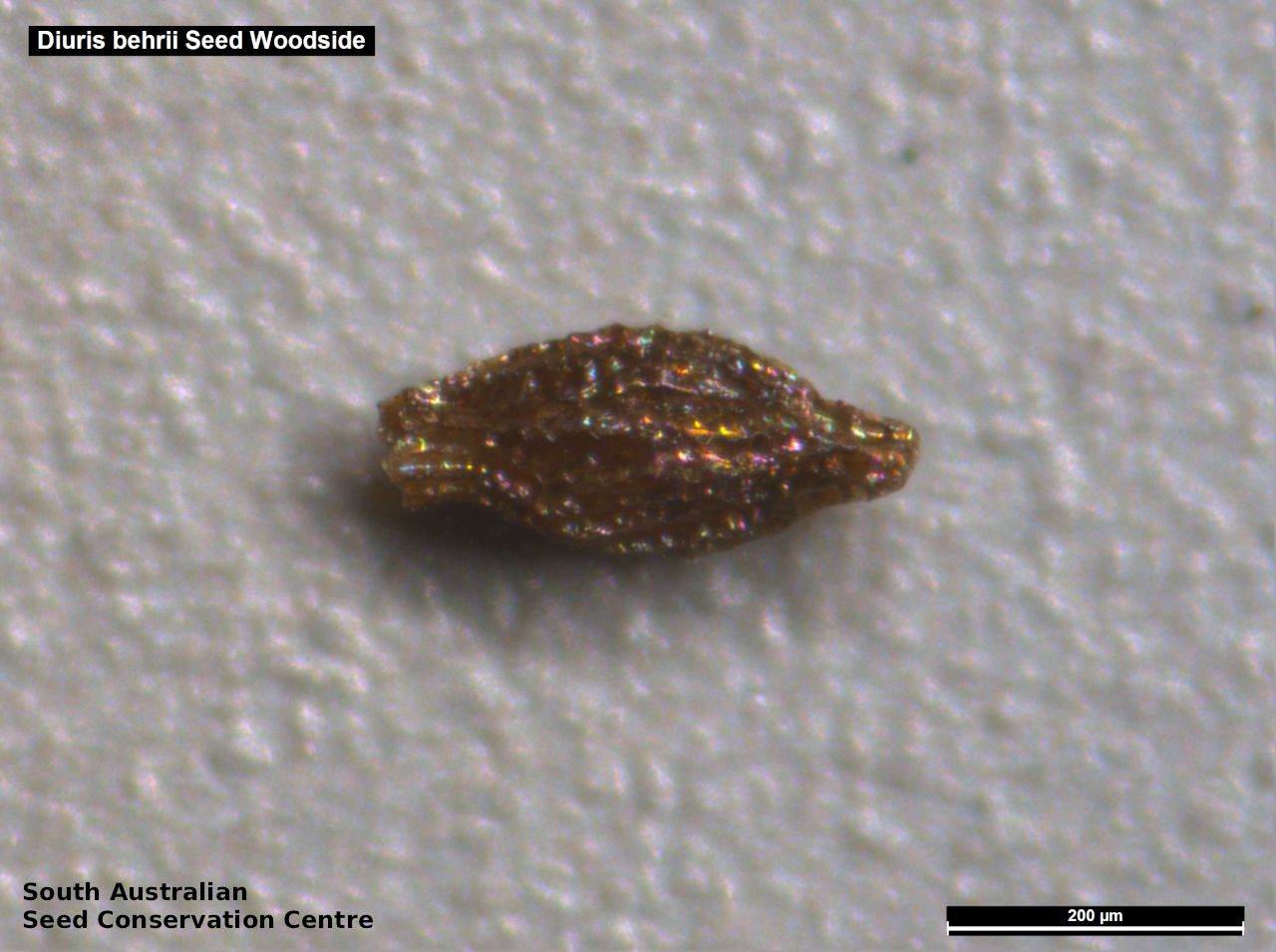
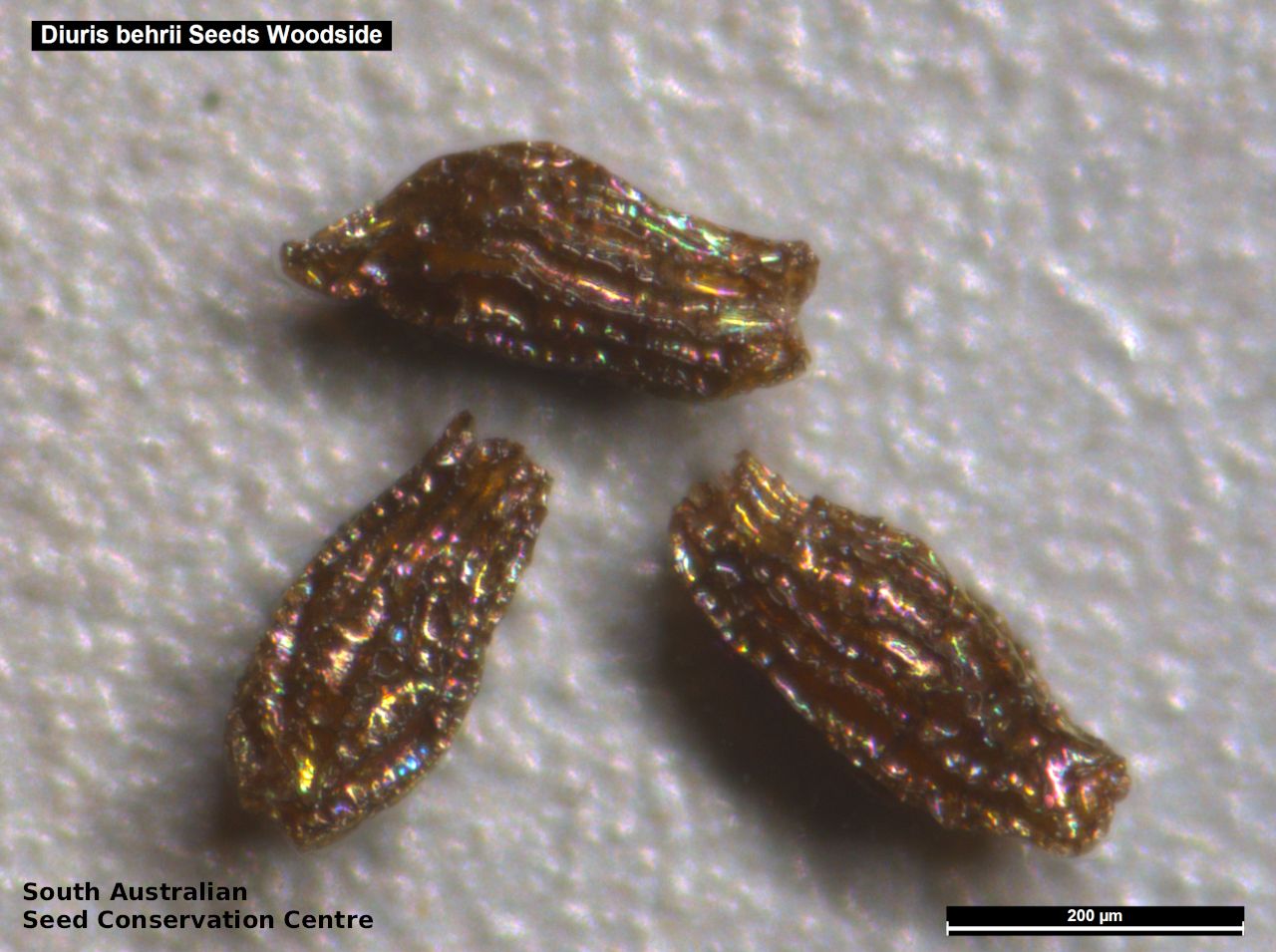

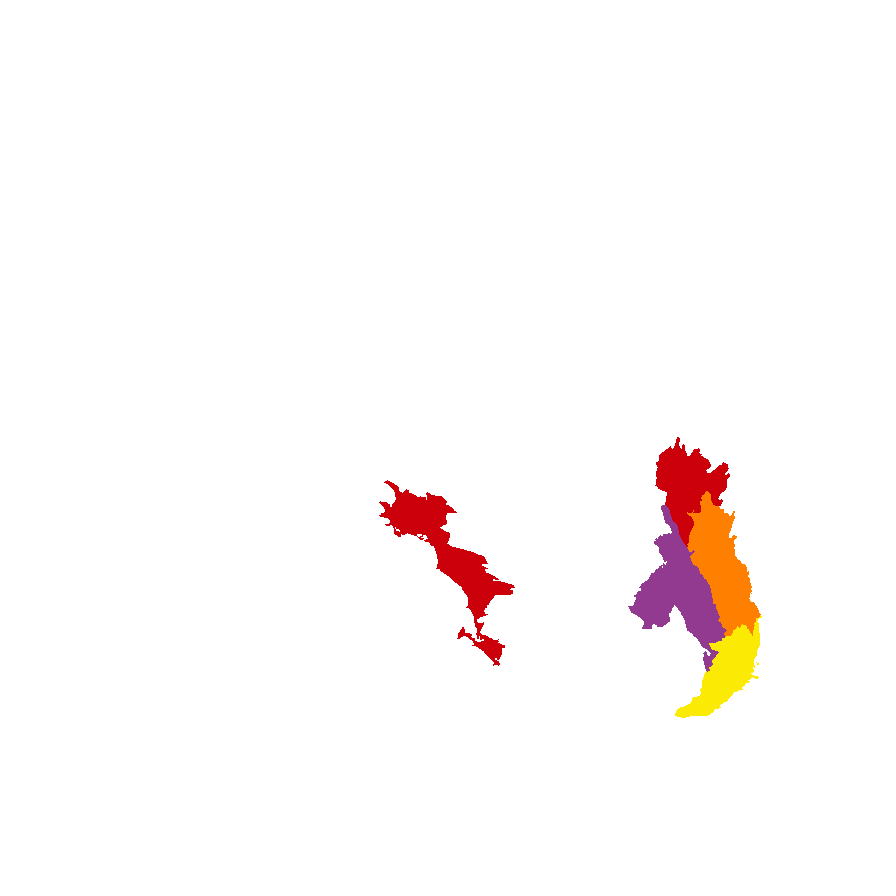
Botanical art
Prior names
Diuris pedunculata var. gigantea
Diuris lanceolata, partly
Diuris pedunculata, partly
Common names
Golden Cowslips
Behr's Cowslip Orchid
Golden Moths
Etymology
Diuris from the Greek 'dis' meaning double and 'oura' meaning a tail, referring to the long lateral sepals resembling tails, on some species. Behrii named after Hans Hermann Behr (1818-1904), a German-American doctor, entomologist and botanist, who collected in South Australia.
Distribution and status
Found in the southern Flinders Ranges and the Mount Lofty Ranges with a few records from Eyre Peninsula growing in native grassland, open woodland and grassy forest; grows on more fertile soils, especially amongst Kangaroo Grass and Triodia on gentle slopes and flats. Also found in New South Wales and Victoria. Native. Very rare in South Australia. Rare in Victoria. Uncommon in New South Wales.
Herbarium regions: Flinders Ranges, Eyre Peninsula, Northern Lofty, Murray, Southern Lofty, Green Adelaide
NRM regions: Adelaide and Mount Lofty Ranges, Eyre Peninsula, Northern and Yorke, South Australian Murray-Darling Basin
AVH map: SA distribution map (external link)
Plant description
Terrestrial orchid to 40 cm tall in flower. Leaves three to six, narrow-linear, grass-like, to 20 cm long; Inflorescence one to four, drooping, with bright yellow flowers with an orange labellum. Pedicel enclosed within a bract. Dorsal sepal projected forward or obliquely erect, to 17 mm long. Lateral sepals obliquely defiexed, parallel, to 25 mm long, greenish. Petals spreading or drooping, to 25 mm long; claw green, lamina yellow. Labellum to 28 mm long, orange, often with brownish streaks. Flowering between September and October. Fruits are brown papery ellipsoid capsule.
Seed collection and propagation
Collect seeds between December and February. Collect plump capsules as they start to dry and turn brown. Pods will split and release the seeds quickly and will require monitoring. To increase the chances of collecting mature pods, it is recommended that a small breathable bag (ie. Organza bags) be used to enclose the developing capsules. Place the capsules in a container that will hold fine seeds and leave to dry for a few weeks or until the capsule split. Then carefully hold the capsule and tap it gently to release the seeds. Store the seeds with a desiccant such as dried silica beads or dry rice, in an air tight container in a cool and dry place, refrigerator or in liquid nitrogen.
| Location | No. of seeds (weight grams) | Number of plants | Date collected | Collection number Collection location | Date stored | % Viability | Storage temperature |
|---|---|---|---|---|---|---|---|
| BGA | 40,000 (0.036 g) | 6 | 3-Dec-2010 | K. Brewer Southern Lofty | 1-Nov-2016 | 70% | -80°C |
| BGA | 38,000 (0.035 g) | Woodside Southern Lofty | 1-Nov-2017 | N/C | -80°C | ||
| BGA | 44,500 (0.041 g) | 4 | 25-Nov-2017 | JJS5 Murray | 30-Jun-2018 | N/C | -18°C |
| BGA | 141,300 (0.13 g) | 8 | 28-Sep-2017 | KHB977 Southern Lofty | 30-Jun-2018 | N/C | -18°C |
| BGA | 250,100 (0.230 g) | 11 | 30-Oct-2021 | BKB19 Murray | 10-Aug-2022 | N/C | -18°C, -80°C |
| BGA | 281,700 (0.259 g) | 10 | 5-Nov-2021 | JJS5 Murray | 10-Aug-2022 | N/C | -18°C, -80°C |
Number of plants: This is the number of plants from which the seeds were collected.
Collection location: The Herbarium of South Australia's region name.
% Viability: Percentage of filled healthy seeds determined by a cut test or x-ray.